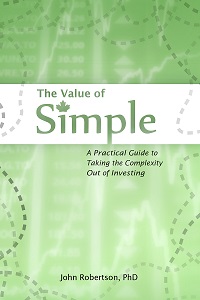Winter has arrived: last night the wind was howling and the rain was freezing. A big swing in temperature from just a few days ago. Things are just going horribly right now: I’m not even halfway towards my writing goal for my thesis this week, despite spending all kinds of time staring at the screen and wishing it was over. The diet’s been shot to hell as I run out the last of the Halloween candy. Plus last night was a new low: with the rain and the cold and the wind I didn’t feel like walking to work, but driving seemed silly considering it’s only a 10 minute walk. So, I rationalized it by driving out to pick up a pizza, and then taking that to work. Two fitness goals killed with one stone!
Do you know what I like?
Puppies.
I’m walking in to work and it’s as cold out as it will be the day in hell when I finish my thesis (i.e.: frozen over), and I’m basically freezing my nuts off and cursing the very sudden arrival of winter winds. There’s this guy walking along at a perfectly normal pace, and trailing behind him are these two tiny puppies. They’re hauling ass just trying to keep up with him, falling all over themselves if they catch up and try to jump on his leg, and just generally enjoying the hell out of life. I’m freezing, that guy is freezing, and these tiny puppies who should have no body heat left to them are just having a blast out in the wide world, just super-excited to be outside.
Conclusion: Puppies are awesome.
Sometimes, life’s little lessons are both obvious and fantastic.
The Globe had an article on travelers choosing to head to US airports to take flights, and discussed/blamed airport taxes this weekend. There are a lot of people from here that go to Detroit for flights, as it is cheaper to drive down there than take a flight out of London or Toronto most times. Significantly cheaper, since it does take gas or bus fare to get down there, as well as the hassle of crossing the border. So, is that price difference attributable to taxes as the article suggests? “Pearson, which holds the dubious distinction of charging the world’s highest fees for planes to land, paid more than $140-million in rent last year.” That sounds like a lot, but Pearson saw 30 million passengers last year. The math is simple: the airport tax amounts to less than $5 per ticket. Believe me, I’m not driving to Detroit for five bucks. The price differential is coming from somewhere else. Maybe it’s the other fees the airport is charging, rather than the government, but I suspect more blame can be pointed at Air Canada than Pearson (though the article did discuss other government subsidies in the US).
Canadian Financial DIY shows that beta is not the best measure of downside risk.
In an aptly titled article, “Priszm’s recipe for disaster”, Canadian Business magazine looks at the troubled operator of KFC restaurants in Canada. You may recall that Priszm was my single worst stock pick since I started doing my own research (yes, even my zero-or-hero bet on Freddie Mac preferreds are doing better). IMHO, Priszm’s “recipe for disaster” was two-fold. First, they didn’t have control over vital parts of the company’s budget: Yum brands (the owner of the KFC rights) did. They had the usual trick of deferring capital spending (i.e.: renovations) and claiming that since depreciation was a non-cash expense, they could pay out so much of their cashflow. Normally, that works in the trust model, if the depreciation expense you can claim doesn’t reflect the reality, so you can indeed defer/reduce capital spending. Unfortunately, it turned out that to renew the KFC franchise agreements, Priszm had to agree to renovate its locations, whether they needed it or not. That put them in a bit of a bind, not having been saving up for that all along. The second issue was that they had an interest-only loan (something I did not catch when evaluating them earlier on), and it all rolled over at once. So when lending is tough (e.g.: now) they face a liquidity crisis. I wasn’t impressed with the communication to investors about that issue, but communication issues aside, that looks to be the biggest risk facing the company right now. Either they find a new lender (and the clock is ticking — they’ve already arranged for one extension, which runs out in a month), or they could find themselves defaulting.
I think the big take-away lesson there is to avoid balloon payment schemes: it’s much easier to roll small portions of your debt, even if you have to suffer high interest rate spreads, when conditions are tight. And, if it comes to it, aggressive focus on reducing the debt could mean a company could pay off the debt as it matured, as long as the amount maturing in a given year was within its capabilities. Many lending covenants will keep companies to something like a 5 to 1 debt to earnings/EBITA ratio, so if the loan maturities are evenly spread out over 5+ years, it should be possible to become debt free by paying off the loans as they mature (by suspending dividends/capital reinvestment spending/deferring maintenance etc). Priszm’s one big loan strategy deprived them of that option.
Back to the issue of depreciation, it’s really an interesting one, and something that’s fairly important when looking at whether or not a trust’s payout is sustainable. The accounting rules provide guidelines for what depreciation figures to use — and it is important to have some kind of standard, or it would be all too easy to manipulate the books by just choosing a figure for depreciation that suits your mood. But a standard figure for depreciation is going to be perfect for almost nobody. Take computers for instance. At home we have here a powerful desktop system I use for everything from gaming to doodling to running MATlab scripts (as well as blogging, checking email, etc). The price curve of computers is such that all that power didn’t come cheap, and two years later that computer’s likely worth maybe 30% of what I paid for it, as now it just has the power of a typical mid-range desktop system. Wayfare on the other hand just has a little netbook for doing word processing and surfing the internet (and because it’s light and portable), and even though it’s also two years old now, it’s probably still worth at least half what she paid, since it’s still perfectly suited to achieving those goals. Similarly, you’ve probably seen lots of workplaces with downright ancient technology that still serves their purposes fine, even though it was long ago depreciated to zero on their balance sheets.
So, one example to think about: Canadian Helicopters (CHL.UN) is one company I like a lot – they’re paying out a decent amount of cash, and they’re earning that even under GAAP earnings. They amortize their helicopters at 4%/yr, straight-line (that is, after 25 years, the helicopters are recorded as having $0 value). I’m told though that a helicopter is far from worthless, even after 25 years. Though they didn’t say how old the helicopters were, in 2009 CHL sold 11 helicopters (plus some land) for $30 million. It’s unfortunately not spelled out how much of that was for the helicopters, or how old the units were when sold (likely fairly old since the buyer is reported to be replacing them within 2 years), but the end result was a reported one-time gain of $1.4M on the sale. Anyway, my point is that here’s a company that’s likely getting close with their amortization figures, or potentially even over-reporting depreciation (that is, their assets may be worth more than their balance sheet indicates). Though I have a “full position” in CHL at the moment, and though it’s been up a fair bit this year (I generally prefer buying stocks when they’re down), I’m thinking of getting more for this reason. The biggest issue is that its largest few clients make up a large part of their revenues, and can be fickle — Ornge took over their own operations, and for the NWS work, CHL lost out in the last round of bidding. That was offset a bit by picking up more work in Afghanistan, but now a very large part of their business is focused there.
Jim Chanos makes the case to CNN that China’s in a construction bubble. What to do about it? How will that affect the fertilizer and oil stories for China?
Michael James reminds investors that a good reason to limit trading is because of the opposition. I have to wonder if they’ve got room for another almost-PhD on their team :)
The folks at CMT report that TD’s Ed Clark supports a return to 25-year amortizations being the maximum. I’d support that: though it might be nice to have a 35-year amortization as an option for when times get tough, it’s just too tempting for enough people to make it troublesome, plus, it’s a systematic risk issue. After the first 5-year term (about the amount of time the average person goes before picking up and moving again), a person with a 35-year mortgage has only paid off about 7% of their loan. Combined with a minimum 5% down-payment, and it doesn’t take much of a move downward in house prices at all for that person to find themselves in negative equity (or effective negative equity, where their equity is not enough to allow them to sell the house and cover closing costs without finding additional funds). On a more traditional 25-year mortgage, almost 13% of the principal will be paid down in that first 5-year term. [Note that this is an interest-rate dependent calculation: I put 4% into the mortgage calculator, but higher rates result in even less principal paid down: at 6%, the paydown becomes 5% and 10% for the 35- and 25-year amortizations, respectively]
The WikiLeaks release is making waves. I know that they are themselves very secretive about where they get their information from, perhaps to protect their sources, but I have to wonder how they’re getting so much information. I also wonder if they think through what they’re doing. Scott Gilmore had an oped in the Globe examining that issue. A commenter also pointed out that these kind of full, plaintext releases may compromise cryptography. I think that modern techniques in use by governments will still be strong even with a number of cases of cryptotext and plaintext to work with, but I think it may be a question worth asking, especially if there’s a concern of a player with a long memory breaking transmissions from long ago (the news says the releases date back to 1966).




 Questrade: use QPass 356624159378948
Questrade: use QPass 356624159378948 Passiv is a tool that can connect to your Questrade account and make it easier to track and rebalance your portfolio, including the ability to make one-click trades.
Passiv is a tool that can connect to your Questrade account and make it easier to track and rebalance your portfolio, including the ability to make one-click trades.